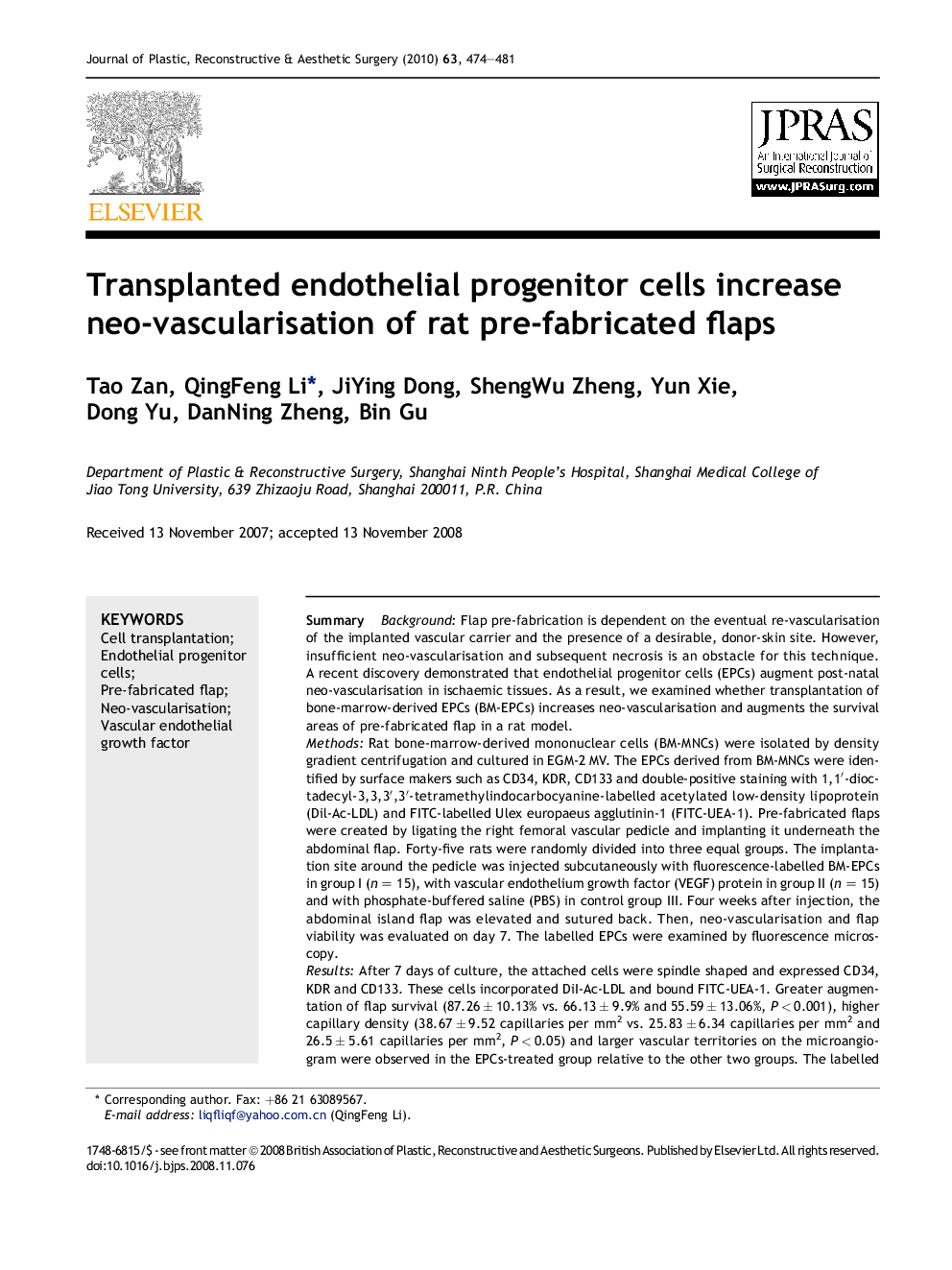| کد مقاله | کد نشریه | سال انتشار | مقاله انگلیسی | نسخه تمام متن |
|---|---|---|---|---|
| 4119868 | 1270363 | 2010 | 8 صفحه PDF | دانلود رایگان |

SummaryBackgroundFlap pre-fabrication is dependent on the eventual re-vascularisation of the implanted vascular carrier and the presence of a desirable, donor-skin site. However, insufficient neo-vascularisation and subsequent necrosis is an obstacle for this technique. A recent discovery demonstrated that endothelial progenitor cells (EPCs) augment post-natal neo-vascularisation in ischaemic tissues. As a result, we examined whether transplantation of bone-marrow-derived EPCs (BM-EPCs) increases neo-vascularisation and augments the survival areas of pre-fabricated flap in a rat model.MethodsRat bone-marrow-derived mononuclear cells (BM-MNCs) were isolated by density gradient centrifugation and cultured in EGM-2 MV. The EPCs derived from BM-MNCs were identified by surface makers such as CD34, KDR, CD133 and double-positive staining with 1,1′-dioctadecyl-3,3,3′,3′-tetramethylindocarbocyanine-labelled acetylated low-density lipoprotein (Dil-Ac-LDL) and FITC-labelled Ulex europaeus agglutinin-1 (FITC-UEA-1). Pre-fabricated flaps were created by ligating the right femoral vascular pedicle and implanting it underneath the abdominal flap. Forty-five rats were randomly divided into three equal groups. The implantation site around the pedicle was injected subcutaneously with fluorescence-labelled BM-EPCs in group I (n = 15), with vascular endothelium growth factor (VEGF) protein in group II (n = 15) and with phosphate-buffered saline (PBS) in control group III. Four weeks after injection, the abdominal island flap was elevated and sutured back. Then, neo-vascularisation and flap viability was evaluated on day 7. The labelled EPCs were examined by fluorescence microscopy.ResultsAfter 7 days of culture, the attached cells were spindle shaped and expressed CD34, KDR and CD133. These cells incorporated DiI-Ac-LDL and bound FITC-UEA-1. Greater augmentation of flap survival (87.26 ± 10.13% vs. 66.13 ± 9.9% and 55.59 ± 13.06%, P < 0.001), higher capillary density (38.67 ± 9.52 capillaries per mm2 vs. 25.83 ± 6.34 capillaries per mm2 and 26.5 ± 5.61 capillaries per mm2, P < 0.05) and larger vascular territories on the microangiogram were observed in the EPCs-treated group relative to the other two groups. The labelled cells formed new vessel structures and expressed von Willebrand factor (vWF) in the pre-fabricated flap.ConclusionsLocal transplantation of BM-EPCs may be a useful strategy for increasing the survival of pre-fabricated flaps, which is consistent with ‘therapeutic vasculogenesis’. EPCs are superior to VEGF in their neo-vascularisation ability.
Journal: Journal of Plastic, Reconstructive & Aesthetic Surgery - Volume 63, Issue 3, March 2010, Pages 474–481